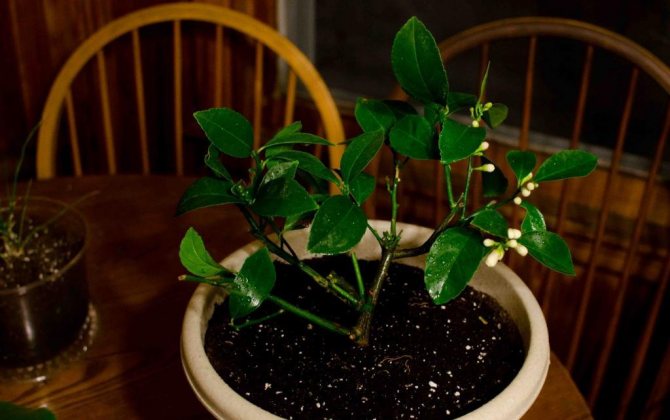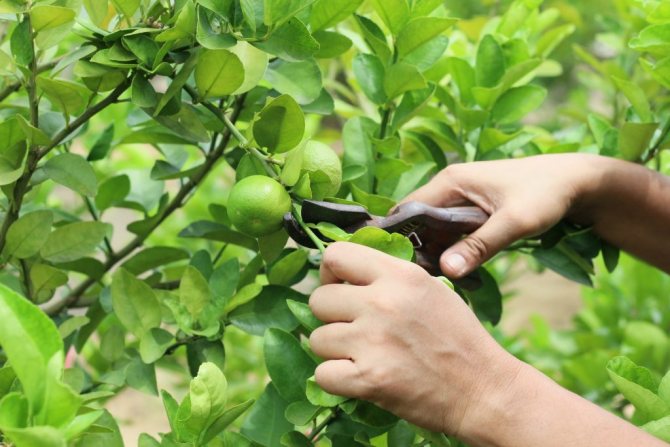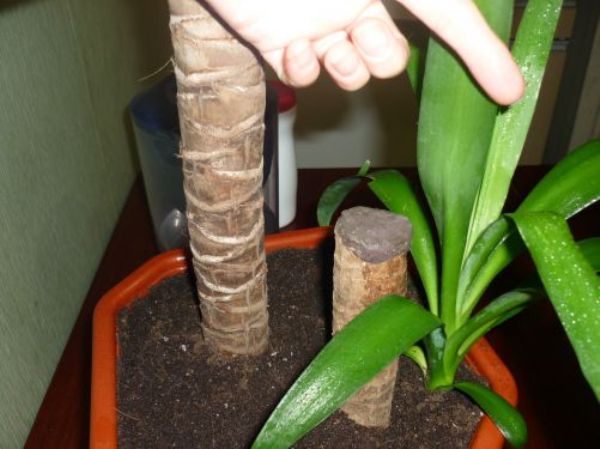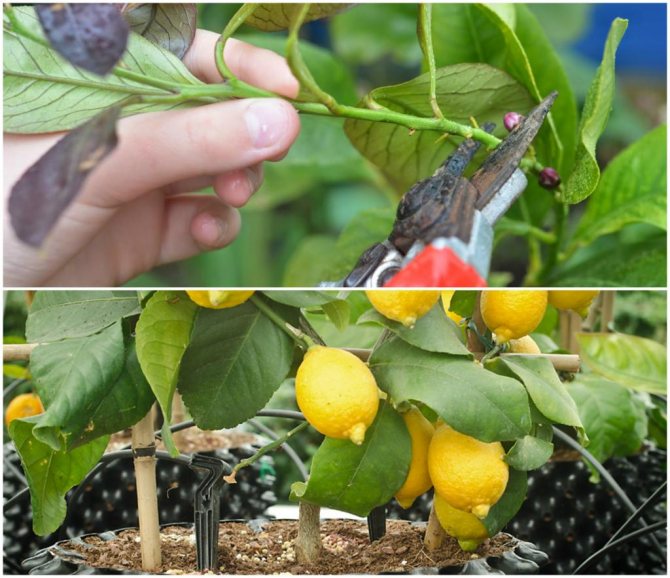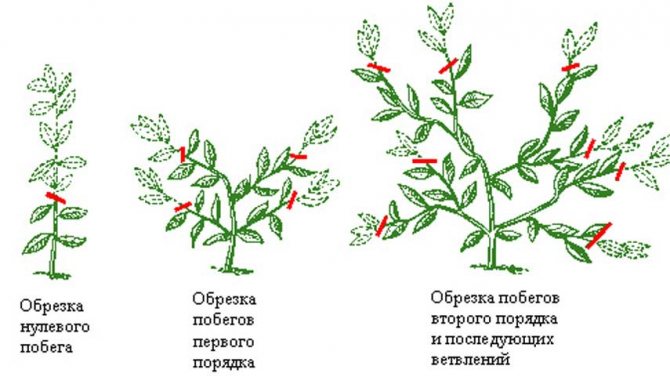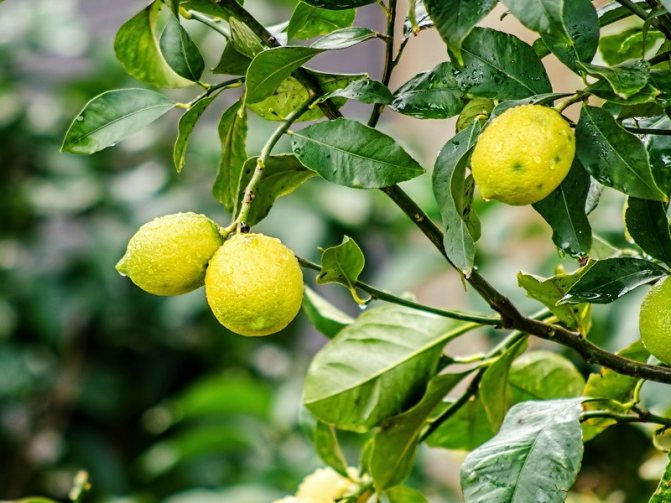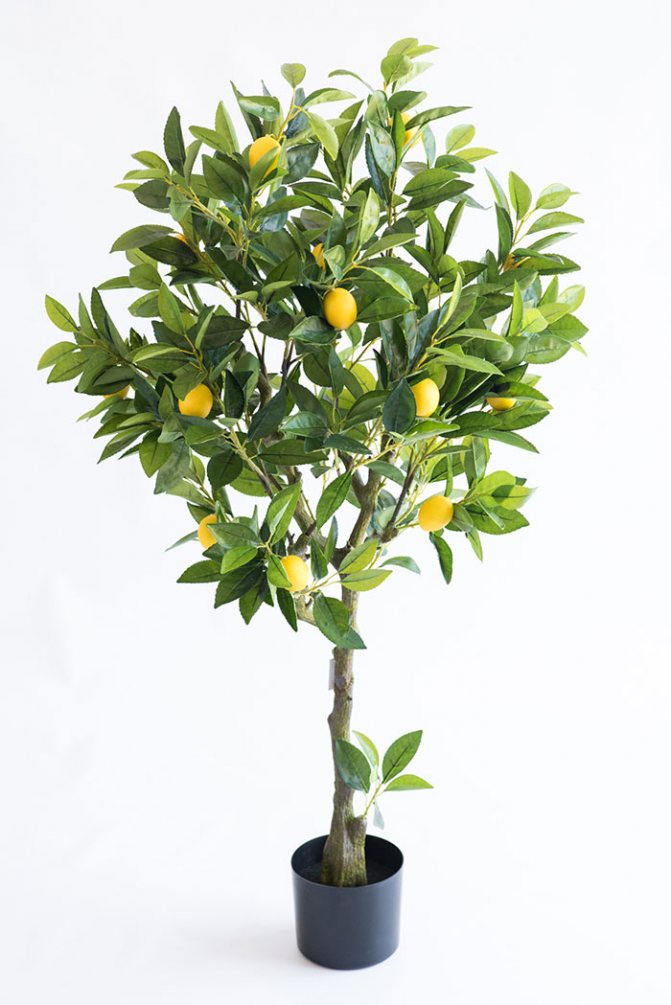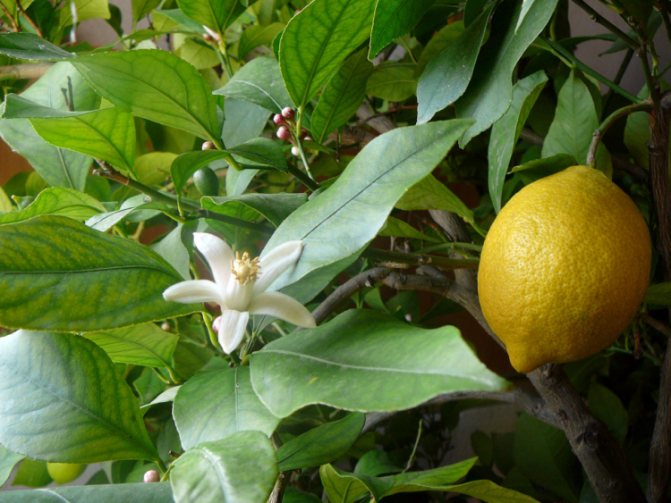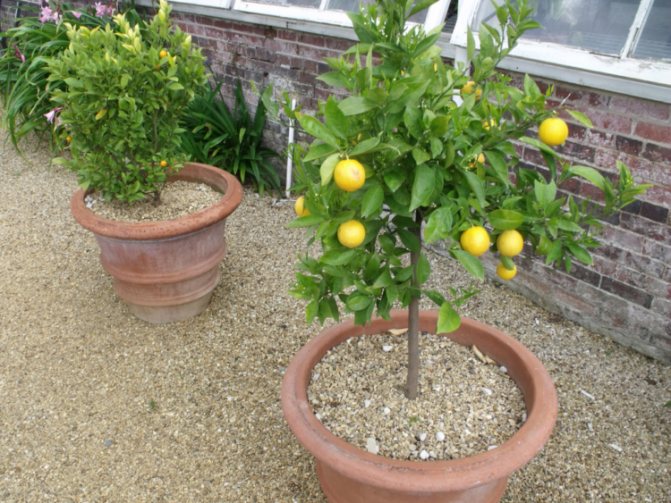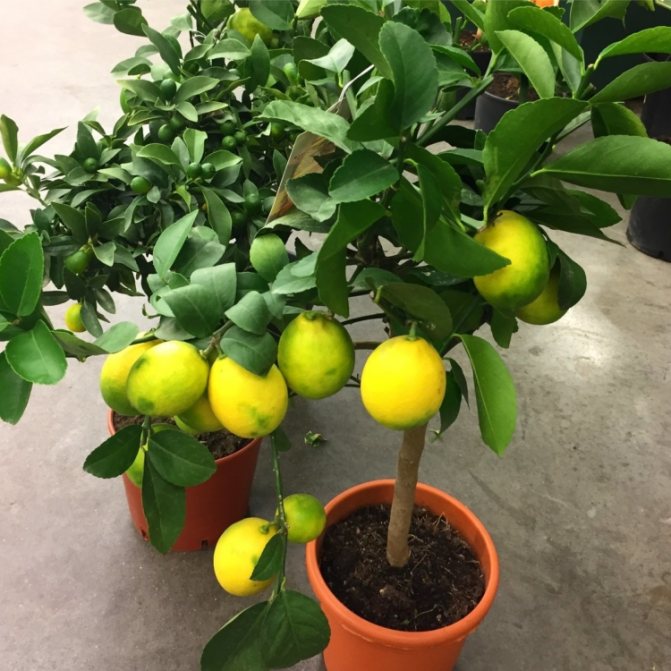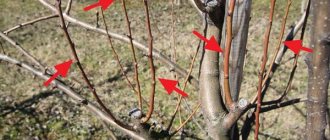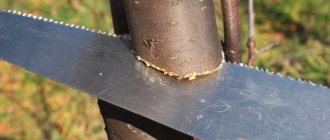Horticulture »Citrus» Lemon
0
878
Article rating
Pruning lemon at home is necessary not only to give the houseplant a neat look, but also to ensure it blooms and fructifies.
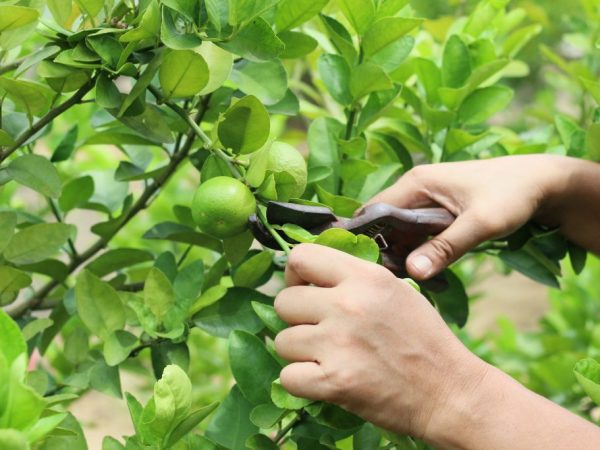
Pruning lemon correctly at home
During what period can the procedure be carried out?
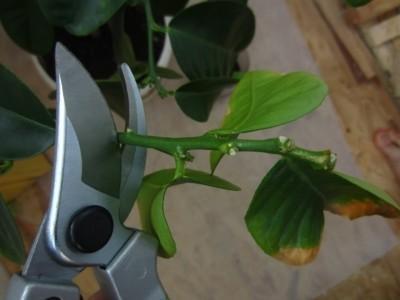

Can lemon be pruned in summer? The optimal time for the operation is considered to be the period from the beginning of spring until the formation of new shoots. To increase yields, you can prune the tree in late autumn.
The tree's ability to bear fruit depends on the correct formation of the crown at the initial stage. Lateral eyelids appear at the 2nd year of the plant's life. For this reason, it is recommended to leave 3-4 buds during the very first pruning. At the fruiting stage, branches of the 4th order appear at the tree. The gardener can use 2 methods of circumcision.
The owner can partially tame the branches by 25 cm... If you find dead or old branches, it is recommended to remove them to avoid diseases. Shoots often interfere with each other's development. In this case, you need to leave the strongest branches.
Best time to prune indoor lemon
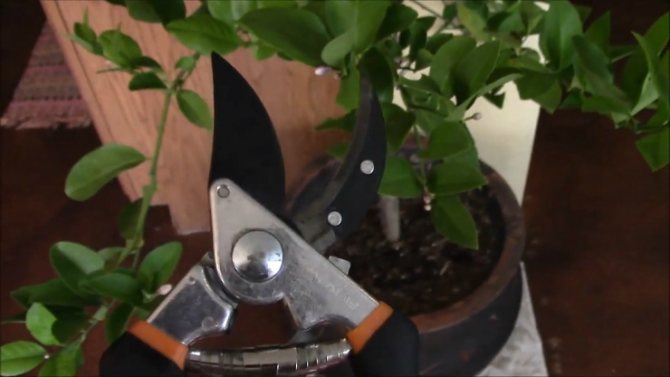

It is better to remove lignified branches with pruning shears, but two nails can be used for young branches. Don't forget to disinfect your instrument!
In principle, excess shoots from indoor lemon can be removed at any time of the year. The most suitable date for this business is March - early April.
At the same time, experts still recommend refraining from carrying out "surgical" intervention in late summer and early autumn. The fact is that pruning a lemon stimulates the formation of new shoots, which are absolutely unnecessary in the cold season.
Since the lemon grows in waves, it is allowed to carry out several pruning per year.
Follow-up: step-by-step instructions for beginners
At 1 year old, only the trunk needs to be pruned to stimulate the formation of lateral shoots. If you do not carry out the procedure, then the lemon will grow upward. The optimal plant height should be about 25-30 cm. Within 2 years, you can start shortening the side branches. In the future, you can start pruning branches of the 3rd order. The process of crown formation is completed by pruning branches of the 5th order. After this, the fruiting period begins.
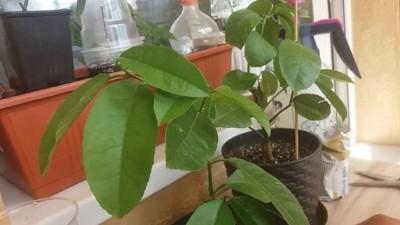

Fruits on a lemon tree appear only after level 4 shoots appear. To increase yields, you must first get rid of non-fruiting shoots.... The grower can remove or prune them by 25 cm. At the age of 15, the lemon needs rejuvenation. To obtain this effect, it is necessary to take into account the peculiarities of tree branching. To form a crown, it is necessary to pince the lemon. The procedure applies to shoots that are 30 cm long.
How to cut homemade lemon step by step


Keep the pruning shears at a 45 degree angle when cutting a branch.
In a lemon growing indoors, the shoots are pruned according to the following rules:
- The main shoot is shortened when it reaches a length of 18-23 centimeters (usually this happens already in the first year of life). This promotes more active branching of the plant.
- In the future, from 3 to 4 strong shoots are left on the bush, evenly scattered along the crown of the shoot. These will be first-order branches. When they reach 15-20 centimeters, they are pinched, removing 1-2 upper underdeveloped kidneys.
- On each branch of the first order, two shoots of the second order are left (they are pinched in the same way as described above).
- On the branches of the second order, from 3 to 5 branches of the third order appear, and later an increment of the fourth, last, order is formed.
This completes the formative pruning of the lemon - on the branches of the fourth order, the fruits usually begin to set.
Fruit-bearing shoots are cut to ¾ of their length immediately after harvesting.
Young lemons less than 10 years old can grow so-called fattening branches. As a rule, they are formed from the main shoot or from the branches of the first order. It is easy to distinguish them from normal shoots - they grow much faster and have large, oily leaves.
If the crown of a plant of normal density, then it is better to get rid of such shoots right away. But with weak branching, shorten them by 60-70% of their length.
And with each pruning of a lemon, be sure to get rid of growing inward, sick, damaged and shrunken twigs.
In order for the crown of a homemade lemon to develop more evenly, it must be rotated about a quarter weekly around its axis.
Photo
Next, you can see a photo of a lemon:
Why and when to prune a tree
Why do you need to prune indoor lemon? It makes it possible to create an elegant crown. If this is not done, the seedling will begin to stretch upward. A well-formed crown will improve the degree of fruiting of homemade lemon, give the culture an aesthetic appearance, reduce the risk of its morbidity, and increase life expectancy. Improper pruning or lack of pruning will lead to the fact that you will not wait for the time when your plant bears fruit. Also, a lemon tree will grow without side branches or an ugly thickened bush.
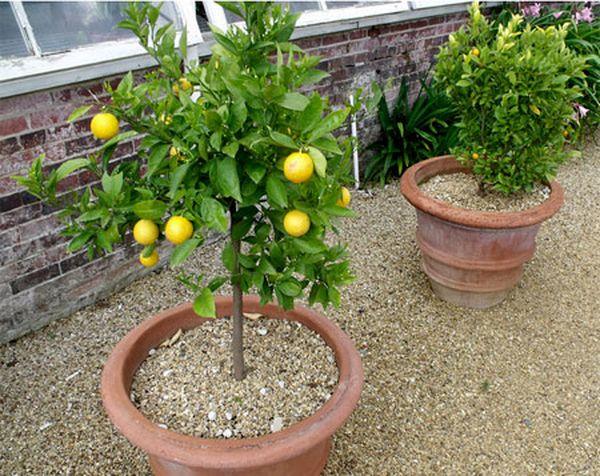

Lemon pruning is recommended in February. Then the plant should be 1 year old. This is true for those seedlings that were independently obtained by cuttings or from shortened seedlings. Prune it before the start of the growing season. After the procedure, the height of the plant should be about 20 cm. It is permissible to plan the pruning of your pet in March. It is best done during flowering and bud formation.
If winter pruning is supposed, then it is carried out no earlier than the time when the fruiting lemon will be freed from the harvest. The procedure is often carried out in the fall. Experts say that autumn-winter pruning can replace spring pruning. Despite the many options, avid florists are trying to choose spring to shape the crown of indoor plants.
What difficulties arise during leaving?
In the process of pruning a plant in a pot, gardeners have the following difficulties:
- Only 1 shoot begins to form on the treated area. In this case, you have to completely break out the base. If necessary, the procedure is repeated several times.
- Tops are another problem that leads to inability to bear fruit. This is the name for vertically growing branches, which take up juices and slow down the formation of aromatic fruits. To direct the forces of the plant in the right direction, you need to cut the branches by 25 cm. In some cases, you have to completely remove the excess shoots.
Fruiting
It is worth noting that fruiting it is better not to allow until the final completion of the formation all skeletal branches of the lemon crown.
This is due to the fact that the branches develop very poorly under the heavy weight of the fruit. In most cases, with premature bud formation, they are simply plucked.
And here is a video about how to form a crown, how to properly cut a lemon so that it bears fruit.
Anyone who grows lemon at home will find it useful to learn about the benefits and dangers of its fruits, about the secrets of caring for a tree in autumn and winter, about the necessary feeding, planting rules, transplanting and ideal soil, as well as about problems with foliage and their ways solutions.
Care after pruning
Pruning lemongrass means taking special care of the plant after it has been done. In addition to disinfecting cut branches, flower growers are advised to carry out unscheduled feeding of the tree. The introduction of phosphorus-containing fertilizers into the soil contributes to the rapid healing of damaged areas of the wood and an intensive growth of green mass.
After 2-3 months after pruning, you can think about transplanting the lemon into a more spacious container, if necessary. The roots in the pot should not look out and completely cover the pot. This lemon should be transplanted after the pruning injuries have healed.
Removing excess flowering
Unlike other fruit trees, lemon has an abundant and always pleasing to the eye flowering. But it, despite its presentable appearance, can harm the yield. Since the plant is too depleted. As a result, the quality of the fruit will suffer greatly. Therefore, pruning your lemon at home involves ridding your pet of weak flowers. If the whole branch blooms poorly, it must also be removed. So it is really possible to rid the lemon of barren flowers.
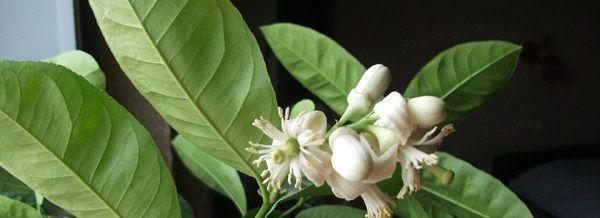

Tips for beginners
For amateur lemonologists, there are tips that will help to optimally and efficiently trim, and will also help to avoid many mistakes.
For beginners to maintain a homemade lemon tree, experts give the following tips:
- during the formation and pruning of the crown, the yield should be normalized by removing the flowers. Excess flowers only drain the tree. After several abundant fruitful years, the plant may dry out;
- anti-aging pruning should be carried out with a decrease in annual growth. It is carried out only in conjunction with feeding;
- instead of pruning, it is better to pinch, since it does not drain the lemon's capabilities so much;
- carefully monitor the formation of "fatty" branches and promptly suppress their development;
- it is best not to allow the plant to bear fruit during the crown formation period, since then the yield will be much higher than if the tree bears fruit during this period. Flowering is especially dangerous in the first year, since it can significantly deplete the lemon, and in the future it will give a low and low-quality yield. The complete death of the lemon is even possible;
- it is best to form a flat crown near a tree;
- pruning should be done only as a last resort and where it is really needed. With its help, you can improve the branching and form a regular and beautiful crown;
- short pruning is carried out when it is necessary to form strong new shoots, and long - if it is necessary to form fruit buds.
With proper pruning, you can form a beautiful crown, as well as improve the yield of the tree, and you will always have fresh lemons for your tea!
How to rejuvenate an old tree
Any lemon at home, no matter how well looked after, tends to age. How to rejuvenate a plant yourself? It is required to carefully trim the weakened branches as much as possible. This way it is possible to stimulate the intensive growth of young shoots. Rejuvenating pruning is carried out simultaneously with the introduction of dressings. Together with other events, it makes it possible not only to improve the culture, but also to harvest fruits from it for several years longer.Knowing how to prune your handsome man, you can form a beautiful and viable plant that will take its rightful place on the windowsill.
First crown formation
The first time the crown is formed like this:
The ripe stem is cut off at a height of about 20 cm, leaving the buds that have developed well, there should be four of them. From these buds, skeletal shoots will subsequently be formed, which form the basis of the tree. There should be 3 or 4 such shoots, and they should be located on different sides, as evenly as possible. These shoots are considered first order shoots. Each next order of shoots will be 5 cm shorter than the previous one. The fourth order of branches of the crown will be the last.
If everything is done correctly at the first stage, then the decorative lemon will surely begin to bear fruit. They grow well on short branches covered with greenery.
The crown of an adult tree consists of different branches. Some will bear fruit in the first year, others in the next year. In addition, twigs with single apical flowers may appear, as well as fatty, vertically located and incapable of fruiting shoots.
All useful ovary is mainly located on the branches that are at the top of the crown, most often these branches are located horizontally or hang down.
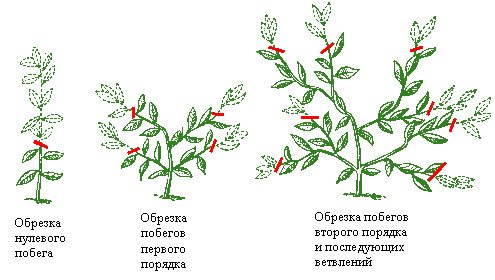

Completion of crown formation
After the young branches grow and become lignified four times, the main formation of the crown can be considered complete - the skeleton of the crown is formed.
But that's not all. All these actions are just the beginning of the formation of a beautiful and dense lemon crown and the beginning of its fruiting.
https://youtu.be/GjtEueADvrQ
If the lemon grows vigorously and the formation of shoots is too rapid, then the newly formed extra shoots must be broken out in the initial phase of growth. Sometimes a pruned branch produces a whole bunch of new branches. Almost all of them need to be removed, since in order for the tree to fully develop, no more than 3 new shoots are required.
In the crown of an indoor lemon, there should be the required number of branches that make up the main skeleton of the tree, growing shoots and many more small fruit branches. The crown should be shaped so that the leaves get as much sun and air as possible.
For growing in a room, it is possible to form a crown with a small stem, while the biological characteristics of the lemon should be taken into account. So it is possible to grow a lemon at home with good foliage, but almost not fruitful, and our task is to get a pretty tree that gives a good harvest every year.


